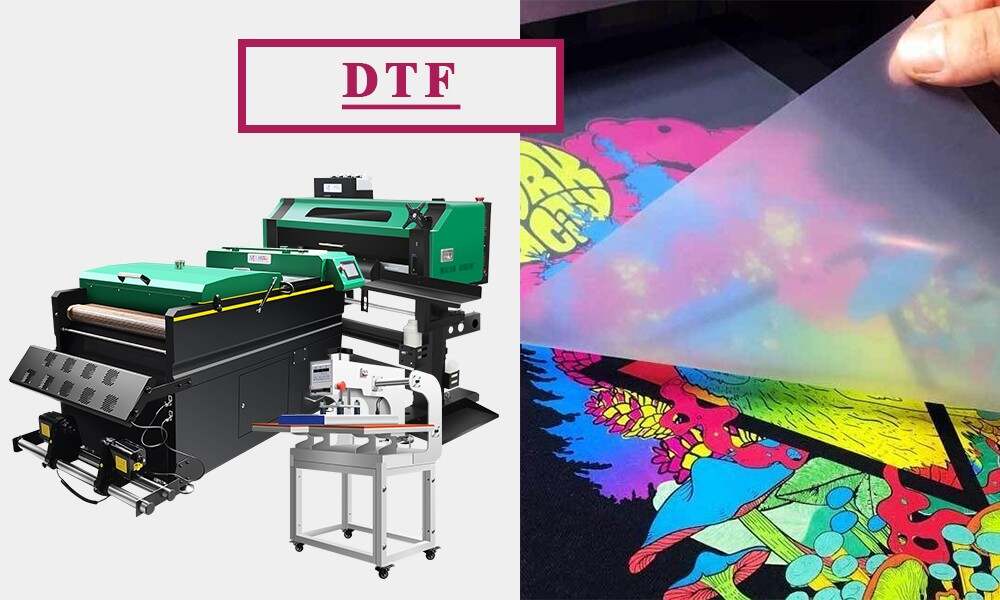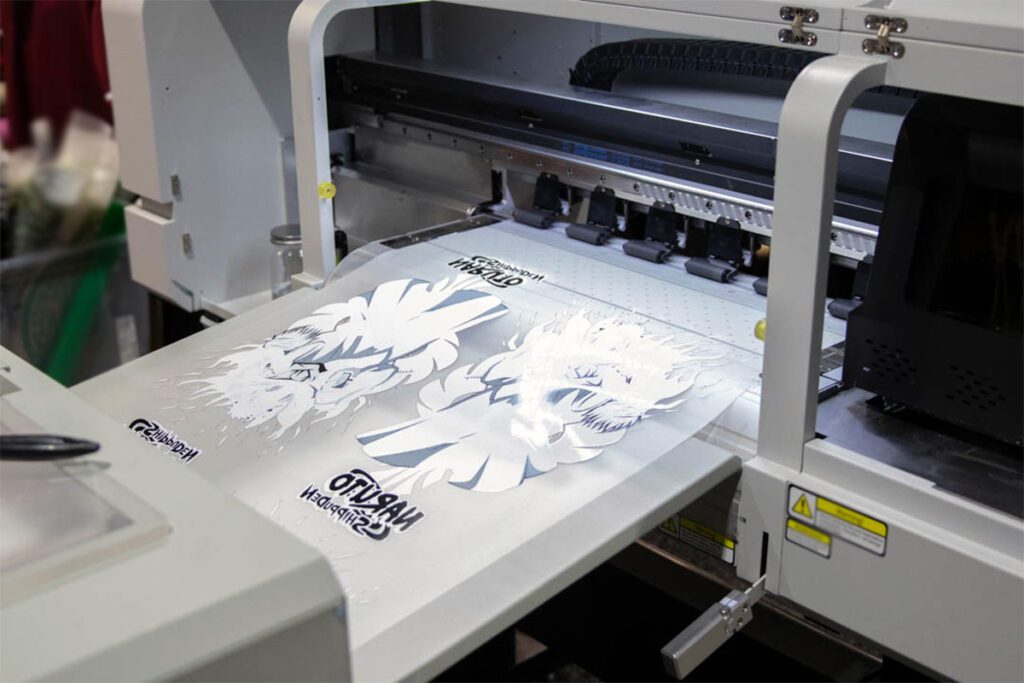Grasping DTF Printing: Tips and Tricks for Achieving Vibrant and Sturdy Prints
In the globe of fabric printing, attaining vibrant and resilient prints is a desired ability that can boost the top quality of your result. From picking the appropriate products to make improvements print setups and developing post-printing ending up strategies, there are numerous factors that can influence the outcome of your prints.

DTF Printing Basics
For those new to the world of textile printing, recognizing the principles of DTF printing is vital to grasping this ingenious technique. Straight to Movie (DTF) printing is a modern technique that includes transferring styles from a special movie onto different textiles making use of a warmth press. Unlike typical approaches like screen printing, DTF uses benefits such as dynamic shades, complex detailing, and the capability to print on varied materials like cotton, polyester, and blends.
The process starts by printing the layout on a special DTF movie making use of a compatible printer with CMYK or CMYKW ink collections. When the design is published, it is then treated with a heat press to develop a resilient and durable print. DTF printing is recognized for its ability to duplicate complicated layouts with high precision and shade accuracy, making it a prominent choice for services looking to produce custom clothing, advertising items, and a lot more.
Choosing the Right Materials

Just as important is the selection of the adhesive powder. The adhesive powder acts as a bonding agent between the printed design and the textile, so it has to have solid attachment properties to ensure a long-lasting and sturdy transfer. Various fabrics may require different types of adhesive powders, so it is vital to match the powder to the fabric kind for ideal results - DTF Printing. By carefully choosing the appropriate products for DTF printing, printers can improve the quality, vibrancy, and long life of their prints.
Optimizing Publish Settings
When intending to accomplish the ideal lead to DTF printing, thorough interest to optimizing print setups is essential for making certain high-grade and accurate transfers onto fabrics. One essential facet to consider when enhancing print settings is the resolution. Higher resolutions commonly result in sharper and a lot more detailed prints, improving the total quality of the transfer. Furthermore, readjusting the ink density can assist make certain and achieve lively shades that the design stands apart on the textile.
While increasing the speed can boost performance, it might jeopardize the final print's clarity and color saturation. Trying out with various rates and observing the results can help determine the optimum setup for each print task.
Additionally, tweak shade accounts and making sure appropriate color monitoring are crucial for achieving consistent and precise colors throughout different prints. By calibrating color setups and accounts, printers can minimize color variances and create uniform results, boosting the overall print top quality and client complete satisfaction.
Preparing Art Work for DTF Printing
Transform the artwork to CMYK color mode to make sure that the shades equate accurately from screen to print. Remember to mirror the last design before publishing to make certain that it transfers appropriately onto the garment. By adhering to these actions and paying close focus to the details, you can prepare artwork that is maximized for vivid and resilient DTF prints.
Post-Printing Finishing Methods
Applying efficient post-printing ending up strategies is critical to enhancing the visit our website durability and aesthetic charm of DTF prints on fabrics. As soon as the printing process is total, using heat to the published layout is vital.
After warmth pushing, peeling the animal movie very carefully is a vital action. This procedure must be done gradually and gradually to avoid any type of damages to the print. Once the movie is removed, the print might call for added treating time to better establish the ink into the textile. This step helps enhance the washability and durability of the print, guaranteeing it can withstand numerous clean cycles without fading or fracturing.
Furthermore, trimming any kind of excess film around the layout can provide the last print a clean and professional appearance. Making the effort to effectively complete DTF prints post-printing can considerably affect the total quality and durability of the fabric layout.

Conclusion
In final thought, understanding DTF printing calls for an extensive understanding of the fundamentals, picking appropriate materials, enhancing print setups, preparing art work properly, and utilizing post-printing finishing techniques. By complying with these ideas and methods, one can achieve long lasting and lively prints that fulfill their wanted top quality criteria. pop over to this web-site Regular technique and focus to information are essential in achieving successful outcomes in DTF printing.
From selecting the right products to make improvements print setups and developing post-printing ending up strategies, there are countless variables that can affect the result of your prints. Unlike conventional techniques like screen printing, DTF content offers benefits such as vivid shades, complex outlining, and the ability to publish on varied products like cotton, polyester, and blends.
Once the design is published, it is after that treated with a heat press to develop a resilient and resilient print.When aiming to attain the finest results in DTF printing, meticulous focus to enhancing print settings is critical for making certain exact and premium transfers onto fabrics.In conclusion, understanding DTF printing needs a comprehensive understanding of the essentials, choosing appropriate products, optimizing print setups, preparing art work efficiently, and utilizing post-printing completing techniques.